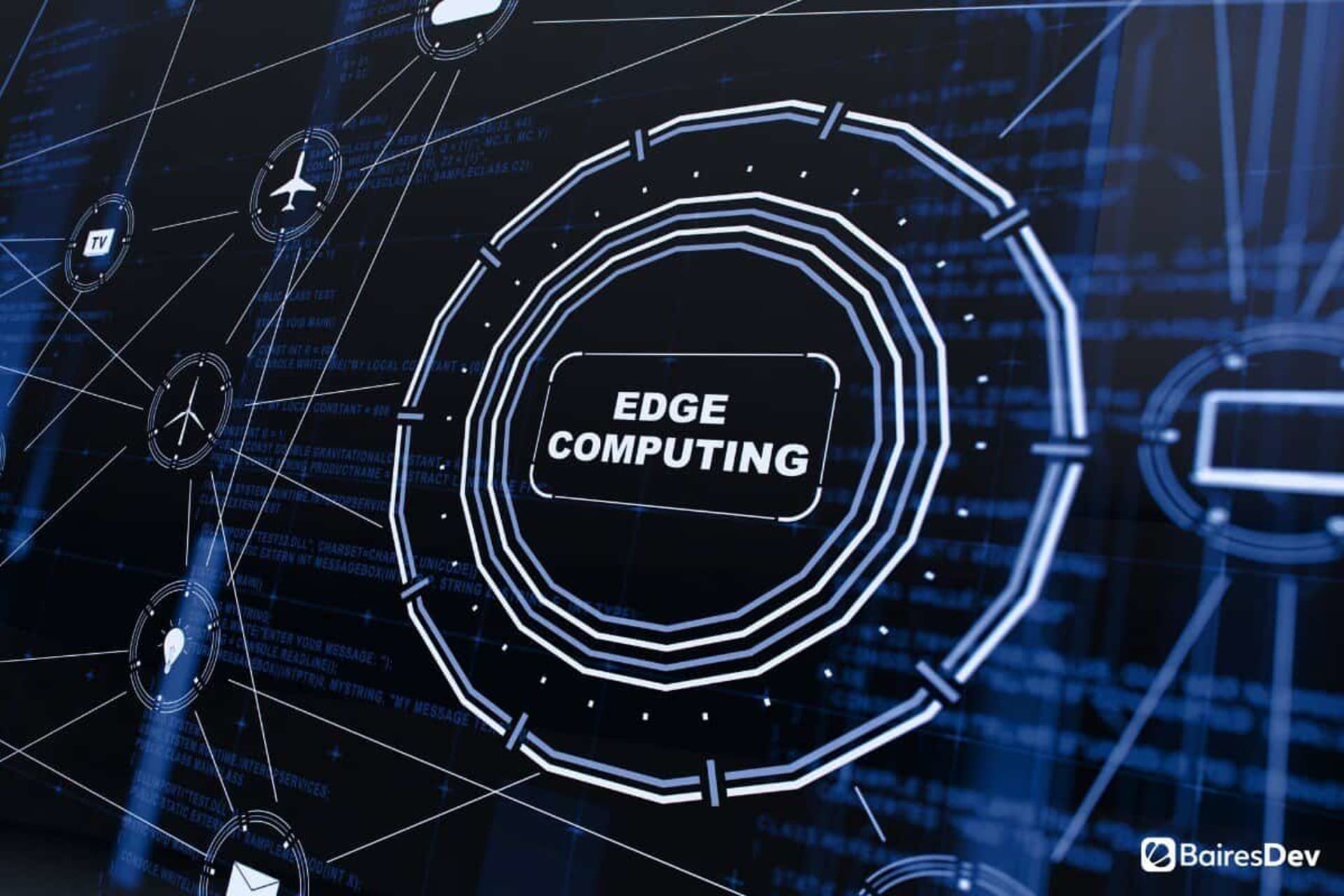If you think about your central data processing facility as the “hub” of your computing “tire,” then edge computing takes place at the “rim.” At the end of each “spoke,” you may have connected devices whose data you want to analyze. However, sending that data back and forth from rim to hub takes up valuable computing resources. Edge computing enables you to process the data without compromising your other computing needs.
Is this the first you’re hearing of edge computing? If so, you may be wondering if it’s just another high-tech trend that’s not relevant for your business. While it’s true that it might not be right for your operations, it’s not a fad. Edge computing can fulfill a broad spectrum of computing needs for companies in a variety of industries and will become increasingly useful over time as businesses continue to incorporate more connected devices into their operations.
The following video describes what edge computing is and how it works:
To help you determine whether or not edge computing is something you should try, we’ve come up with the questions below. If you answer “yes” more than you answer “no,” it may be time to explore this emerging approach.
1. Are you in one of these industries?
Companies in the following industries are particularly likely to benefit from edge computing.
- Gaming. Edge servers can be used to bring streamed games closer to gamers, considerably reducing latency and improving the gaming experience.
- Healthcare. Edge computing can be deployed for multiple uses in healthcare, including evaluating the data generated by patients’ wearable devices.
- Logistics. Sensors and an edge communication node can be used to transmit data between driverless trucks in a convoy traveling together, an approach that decreases congestion and fuel costs.
- Manufacturing. Connected machines can be used to monitor and collect data about manufacturing equipment, enabling operators to know equipment health at all times.
- Oil & Gas. Sensors can be deployed to send information about critical equipment to nearby processors for real-time analysis.
- Retail. In-store kiosks can gather and immediately analyze data from customers, generating a better understanding of their needs and expectations.
- Smart grid. Sensors can be installed to help power utilities monitor the condition of equipment, with information being sent back to the central processing facility only when human attention is required.
- Traffic management. Edge computing applications could be used to optimize bus frequency, open or close highway lanes, or send information to autonomous cars — all without the need to send high volumes of data back and forth to central processing centers.
2. Do you struggle with latency issues?
For many companies, such as those in healthcare or the financial industry, speed is critical and even milliseconds can be decisive for success or failure. Companies that deliver their services online can also suffer if customers get frustrated with slow speeds and move on to a competitor.
One of the big benefits of edge computing is minimizing latency, which is slowed response time. Processes that don’t need to send data back and forth long distances (such as from a manufacturing facility to a remote data analysis facility) can be done more quickly than those that do. ZDNet exemplifies this by saying that “Car manufacturer Audi…has seen a 100-times boost in its quality control check times since starting to deploy computing at the edge, with only 18 milliseconds of latency.”
3. Are you concerned about security?
Due to its centralized nature, cloud computing is vulnerable to certain types of cyberattacks, including distributed denial of service (DDoS). Power outages can also present a problem. Edge computing, conversely, is distributed, so no one disruption can take down the entire system. Additionally, the amount of data being processed at each edge location is much less than that which would be handled in a typical cloud deployment. Therefore, less data is vulnerable at any given time. These features support edge computing security.
4. Do you process data you don’t need to store?
A recent TechRepublic article states, “A lot of processing is spent sending data to a server for it to analyze and then decide to act on. If the analysis can happen closer to you, that reduces what has to be sent to the data center and speeds things along.” An example of this phenomenon is security videos. An edge computer can determine which data (such as videos in which movement is detected) needs to be sent to your central processing facility and which doesn’t, saving valuable computing resources.
5. Do you expect to expand in the coming years?
It can be hard to know exactly what to expect when you plan for the future, given the many variables inherent in any company’s operations. If you’re considering expanding your data center to accommodate future needs, it may be prudent to consider a series of edge computing centers instead, as this approach offers greater flexibility and a much lower price tag if things don’t work out as planned.
Companies Should Look to the Future
Gartner predicts that by 2025, the amount of enterprise data created and processed outside a traditional centralized data center or cloud will grow from its current rate of 10% to 75%. This projection for a fast upward trajectory is due to the potential for edge computing to drive innovation across many industries.
Yet, edge computing remains in its initial stages. One reason is that its reliance on fast connectivity makes it a better fit for 5G, which isn’t yet widely deployed. Additionally, many businesses aren’t yet focused on the possibility of a full collection of connected devices. Still, every company should devote some time to thinking about what products, services, innovations, and operations might be possible with this exciting emerging technology.













